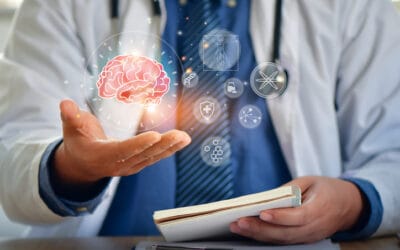Biological and chronological aging
Aging, for the body, is the loss of effectiveness in dealing with the processes of repairing incidental damage that occurs at the genetic level, the decrease in the general functionality of organs, and the difficulty in dealing with physical and emotional stress and in countering external pathogens. All these are also factors that contribute to determining the biological ageDifferent from chronological age. It is a measure of the body's ageing, based on the effectiveness of the mechanisms that keep cells young and on markers of the functionality of organs and apparatus. of an organism, which does not always coincide with the chronological age. While the former, in fact, if correctly estimated can be a good indicator of susceptibility to getting sick and dying, the latter is a convention. Therefore, when one wants to pay attention to the ongoing aging processes in the organism in order to prevent and slow them down, one must refer to biological age.
Calculating biological age
Biological aging, as we have described it, does not proceed at a constant rate. It can slow down or speed up depending on the occurrence of certain cellular processes, depending on the condition and function of our organs, and depending on the lifestyle we lead. Therefore, defining a biological clock that can measure the true ageing of an organism is complex. Added to this, then, is the fact that each organ proceeds independently, may be subject to different risk factors, and may therefore have a different biological age than the neighboring organ. In general, however, to calculate a person’s biological age, it is necessary to know his or her chronological age, health status, and to measure some significant parameters (or biomarkers) that reflect the “aging trajectory“.
Each organ proceeds independently, may be subject to different risk factors, and may therefore have a different biological age from that of the neighboring organ
The biological clock of individual organs and tissues and that of the entire body
Research has shown how aging processes are specific and distinct in various tissues and organs, and how difficult it is, therefore, to define parameters that cover the whole organism. One of the first to try, Steve Horvath, a biostatistician and biogerontologist, developed an epigenetic clock that assesses the state of DNA methylation. Methylation is one of the key processes by which the organism regulates gene expression in individual cells and thus determines their functionality. The addition of methyl groups to the nitrogenous bases of the DNA silences the expression of genes, and can have positive or negative effects depending on the function of that particular character. In our genome, in fact, there are “good” genes that if they are kept active produce a benefit to the organism, but there are also other “bad” genes that are better kept silent. One of the prerequisites for healthy aging is the stability of our DNA: hypomethylation of the SIRT6 gene and thus the expression of the corresponding protein (a sirtuin), for example, counteracts aging and represses the activity of destabilizing genes such as those called LINE-1, which, in fact, the more methylated the better.

Information contained in DNA is translated and synthesized into proteins
One of the prerequisites for healthy aging is stable DNA
Epigenetic clocks
Horvath’s clock falls into the class of epigenetic clocks, which-stated simply-consider the processes that determine the genetic expression of cells and, consequently, their functionality (we delved into Horvath’s clock in this article). Among the mechanisms responsible for aging, epigenetic ones have been shown to play a key role, even greater than genetic damage that accumulates over time in the DNA. Methylation is not the only process that can be considered, and several biological clocks have been defined based on other age-sensitive physiological parameters and processes.
Other attempts to measure biological age
Another process closely linked to aging is the shortening of telomeresEnd parts of the chromosomes. They have the function of making DNA more stable and their length is inversely correlated with ageing., the end parts of chromosomes that wear out a bit with each cell division. Telomeres play a protective role with respect to the DNA, preventing the accumulation of damage to it, and many studies in recent years have investigated a correlation between their length in certain cells and an organism’s lifespan. But in general, as we will see in one of the next articles, while it is true that telomere length can provide an indication of an individual’s overall health (and even his or her predisposition to develop the severe form of Covid’s disease), it does not appear to be a valid method of measuring biological age.
A third type of biological clock examines another process that affects the expression of a particular family of genes that appear related to the aging process. This model is called transcriptomic and measures the expression of a few thousand genes. It has great capacity for measuring biological age and predicting clinical risk, but it is extremely complex both to put into practice and to interpret, and is used only in experimental research. A fourth type of clock uses a simpler system called glycation. This method measures a degenerative process that is closely linked to the level of inflammation in the body and is expressed when a sugar molecule binds to a protein molecule, altering its original function. The resulting biological age diagnostic tool analyzes the presence of these sugars (called glycans) on immunoglobulins (antibodies), and correlates this data with ongoing inflammatory processes in the body.

Biological clocks have been defined on the basis of several age-sensitive physiological parameters and processes
Biomarkers for individual tissues
Alongside biological clocks, there are some tests that can be performed that consider tissue-specific biomarkers related to aging. Specifically, they measure a number of factors that reflect the constant change in molecular, cellular, and physiological processes that maintain balance and stability in the body in relation to environmental conditions and aging itself. Among the tests that can be performed are proteomic (measuring proteins), nucleic acid (measuring DNA or small RNA molecules), metabolomic, lipid, and other byproducts of metabolism (e.g., reactive oxygen species directly related to oxidation and inflammatory processes).
The strength of these measurements, the synthetic number, is also their limitation: that is, it does not provide us with guidance on how to intervene to improve this number and rejuvenate physiologically, and it does not indicate a specific risk but a generic risk
Where the research is headed
However, all these efforts to measure biological age must translate into the possibility of extrapolating therapeutic or preventive indications of aging and disease onset. Studies to date on the biological clocks tested have shown that they are useful in predicting major risk factors of aging (such as blood pressure, cholesterol, c-reactive protein) and disease development. Limitations, so far, relate to the difficulty of finding or using single parameters to determine the aging process of the organism in its complexity. Indeed, several markers need to be integrated to comprehensively define the status of different physiological processes, risk factors, and aging.
Currently, the use of biological clocks is related to their ability to succinctly provide a measure of the aging process that our bodies are undergoing by comparing it with our age. Simply put, we can be younger or older than our solar age. However, the strength of these measurements, the synthetic number, is also their limitation: that is, they do not provide us with guidance on how to intervene to improve this number and rejuvenate physiologically, and they do not indicate a specific risk but only a generic risk.
The scientific community is therefore trying to enhance the predictive ability of biological clocks and their clinical applicability with new approaches that can measure not only the synthetic datum but also its specific “components.” SoLongevity has developed its own multidimensional biological age measurement system, which is largely based on epigenetic processes and provides both a synthetic datum and its constituent components. The main goal is to derive useful and timely information to field therapeutic and preventive interventions, and to slow down-or even move back-the hands of the biological clock.







